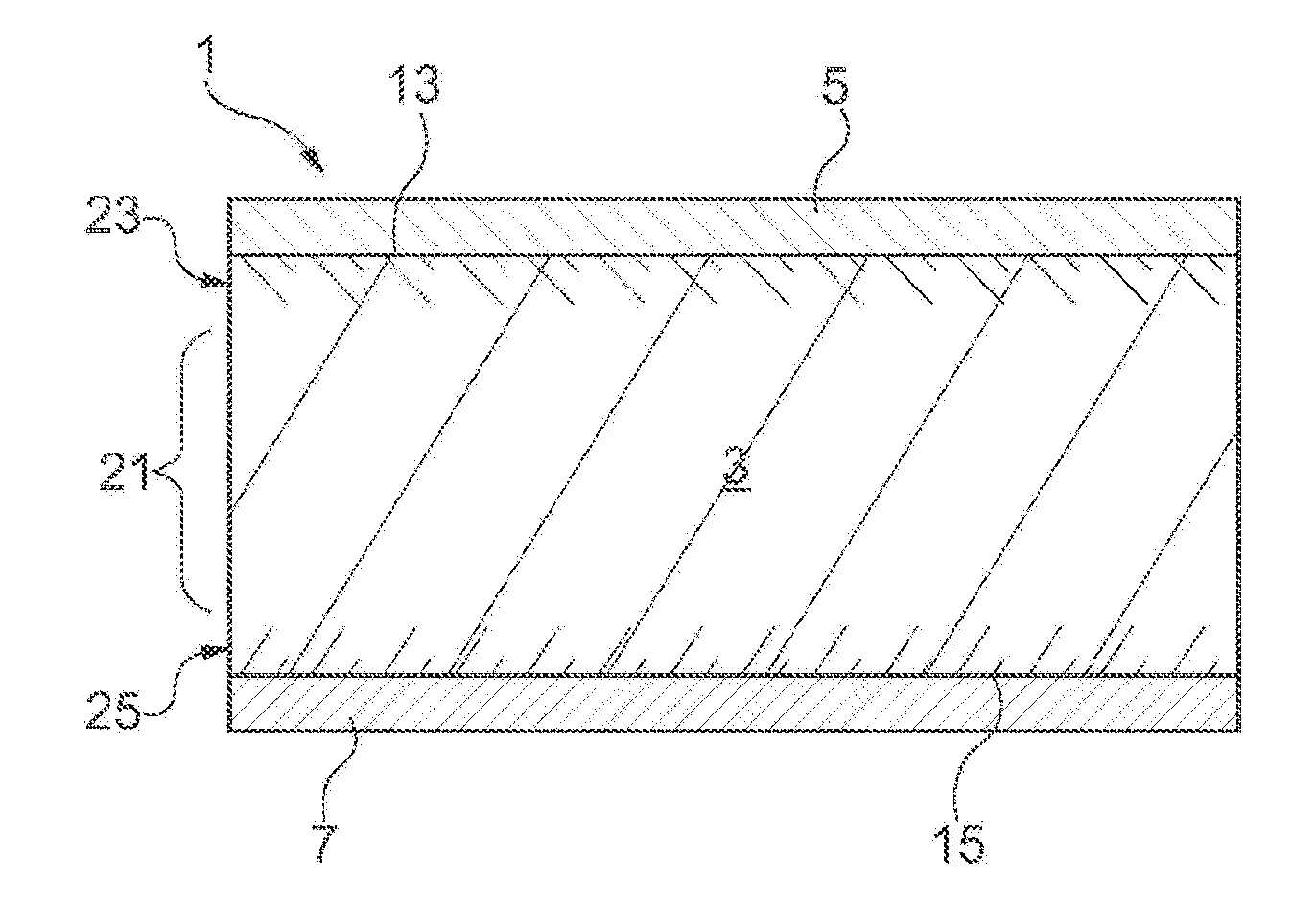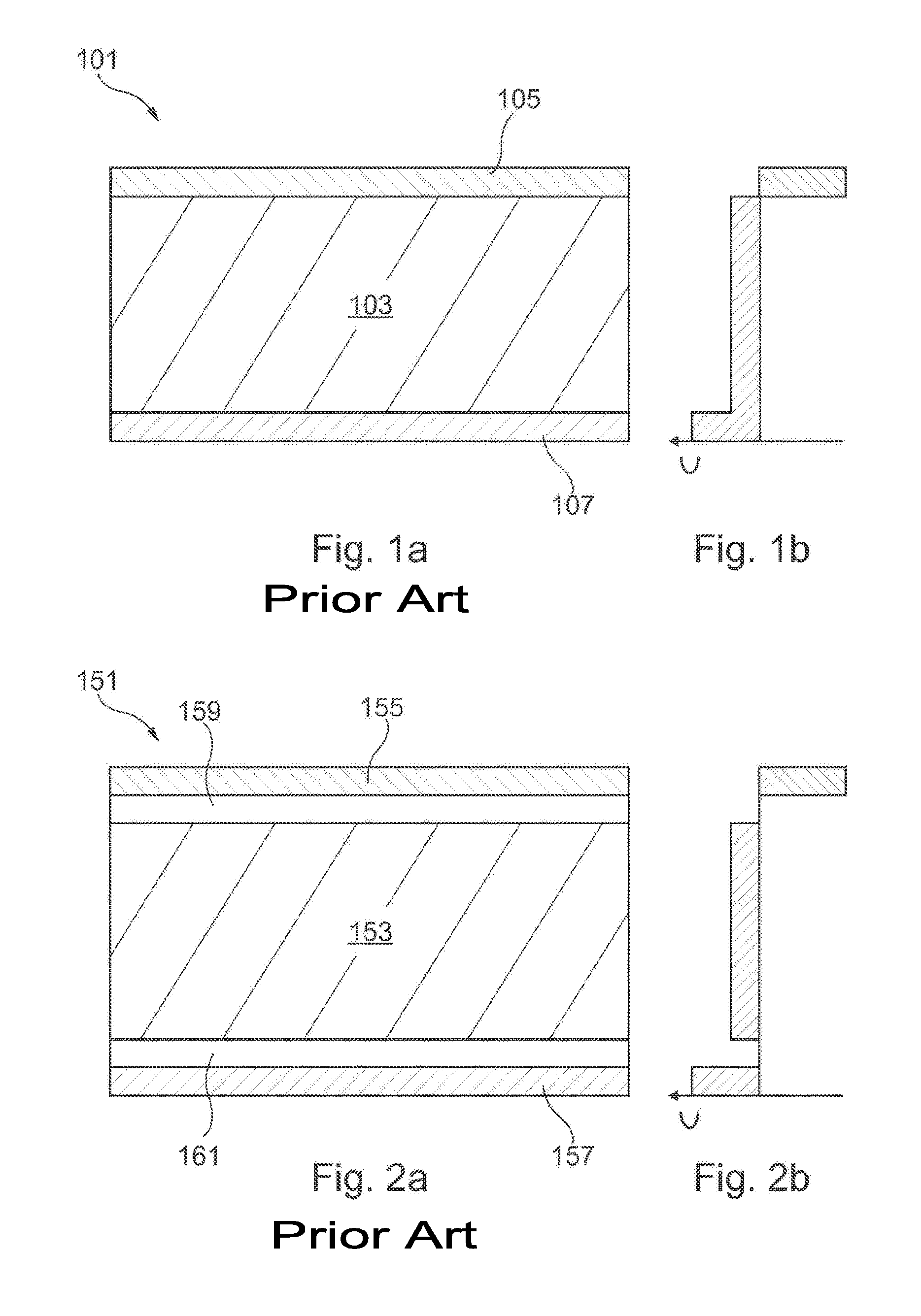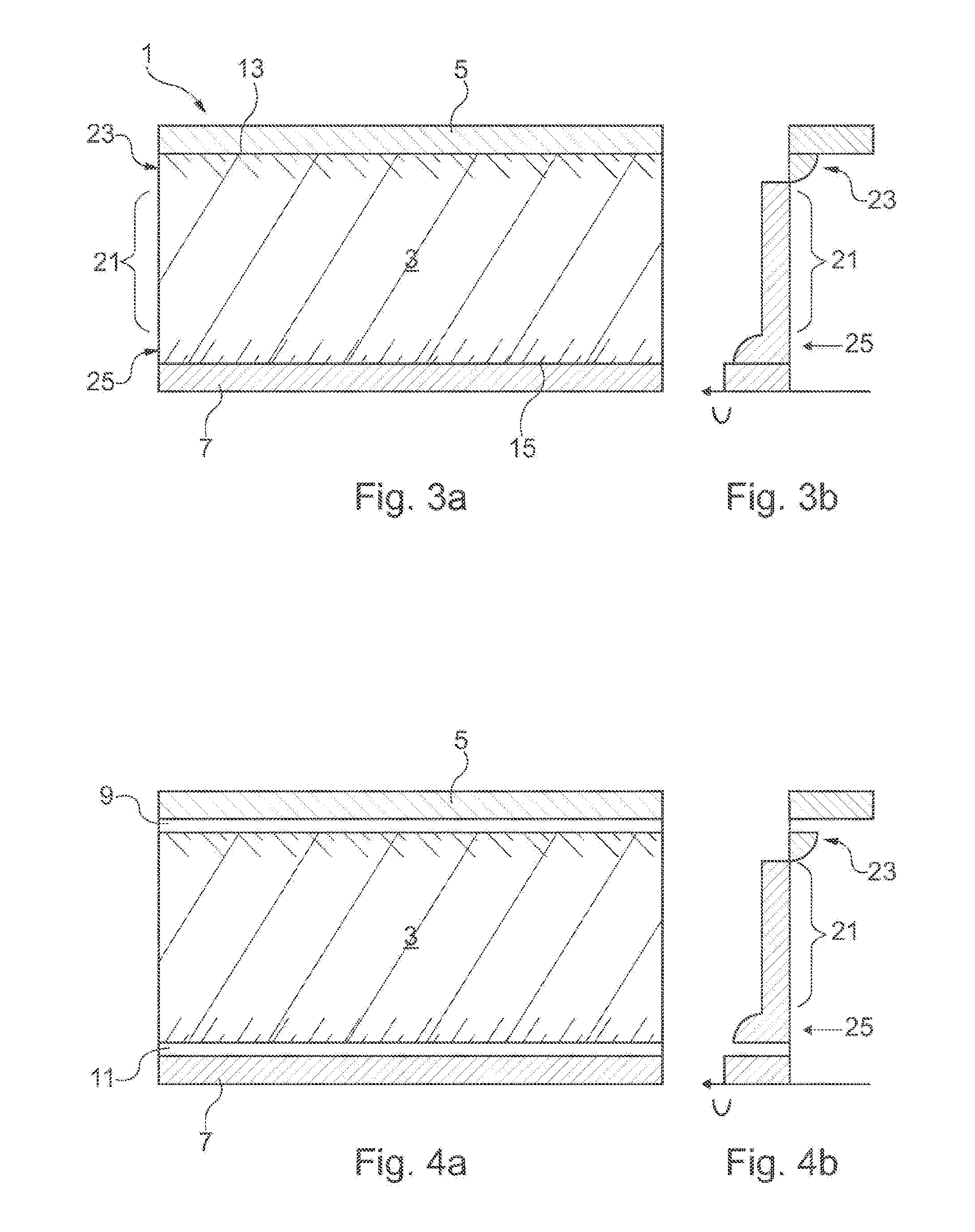Heterojunction solar cell with absorber having an integrated doping profile
- Summary
- Abstract
- Description
- Claims
- Application Information
AI Technical Summary
Benefits of technology
Problems solved by technology
Method used
Image
Examples
Embodiment Construction
[0050]FIG. 3a shows a heterojunction solar cell 1 according to one embodiment of the present invention. An absorber layer 3 of crystalline silicon is doped, as shown in diagram form in the diffusion profile shown in FIG. 3b, homogeneously in a p-type manner in a central region 21. A doped layer 23, 25 with a doping profile is additionally introduced in regions close to the surface. As can be clearly seen in FIG. 3b and is also shown in diagram form by the nature of the shading in FIG. 3a, the doping agent concentration C in each case decreases in the direction away from the interface 13, 15 of the absorber layer 3 and towards the inside of the absorber layer 3. The nature of the presentation of the doping concentration chosen in FIG. 3b (and 1b, 2b and 4b) is to be understood as meaning that the doping concentration of the one type (for example n-type) is shown to the left of the centre of the graph and the doping concentration of the other type is shown to the right of the centre o...
PUM
 Login to View More
Login to View More Abstract
Description
Claims
Application Information
 Login to View More
Login to View More - R&D
- Intellectual Property
- Life Sciences
- Materials
- Tech Scout
- Unparalleled Data Quality
- Higher Quality Content
- 60% Fewer Hallucinations
Browse by: Latest US Patents, China's latest patents, Technical Efficacy Thesaurus, Application Domain, Technology Topic, Popular Technical Reports.
© 2025 PatSnap. All rights reserved.Legal|Privacy policy|Modern Slavery Act Transparency Statement|Sitemap|About US| Contact US: help@patsnap.com



